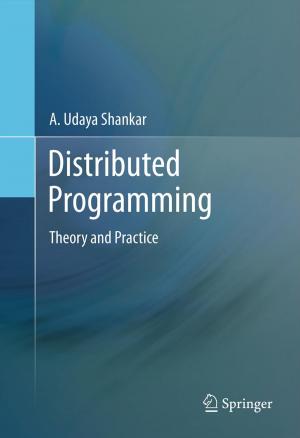Two-Way Analysis of Variance
Statistical Tests and Graphics Using R
Nonfiction, Social & Cultural Studies, Social Science, Statistics, Science & Nature, Mathematics| Author: | Thomas W. MacFarland | ISBN: | 9781461421344 |
| Publisher: | Springer New York | Publication: | December 10, 2011 |
| Imprint: | Springer | Language: | English |
| Author: | Thomas W. MacFarland |
| ISBN: | 9781461421344 |
| Publisher: | Springer New York |
| Publication: | December 10, 2011 |
| Imprint: | Springer |
| Language: | English |
In statistics, analysis of variance (ANOVA) is a collection of statistical models used to distinguish between an observed variance in a particular variable and its component parts. In its simplest form, ANOVA provides a statistical test of whether or not the means of several groups are all equal, and therefore generalizes a test between these groups. One test often used by statisticians and researchers in their work is the Two-Way ANOVA, which determines the differences--and possible interactions--when variables are presented from the perspective of two or more categories. When a Two-Way ANOVA is implemented, it enables one to compare and contrast variables resulting from independent or joint actions. This brief provides guidance on how R can be used to facilitate Two-Way ANOVA for data analysis and graphical presentation. Along with instruction on the use of R and R syntax associated with Two-Way ANOVA, this brief will also reinforce the use of descriptive statistics and graphical figures to complement outcomes from parametric Two-Way ANOVA.
In statistics, analysis of variance (ANOVA) is a collection of statistical models used to distinguish between an observed variance in a particular variable and its component parts. In its simplest form, ANOVA provides a statistical test of whether or not the means of several groups are all equal, and therefore generalizes a test between these groups. One test often used by statisticians and researchers in their work is the Two-Way ANOVA, which determines the differences--and possible interactions--when variables are presented from the perspective of two or more categories. When a Two-Way ANOVA is implemented, it enables one to compare and contrast variables resulting from independent or joint actions. This brief provides guidance on how R can be used to facilitate Two-Way ANOVA for data analysis and graphical presentation. Along with instruction on the use of R and R syntax associated with Two-Way ANOVA, this brief will also reinforce the use of descriptive statistics and graphical figures to complement outcomes from parametric Two-Way ANOVA.















